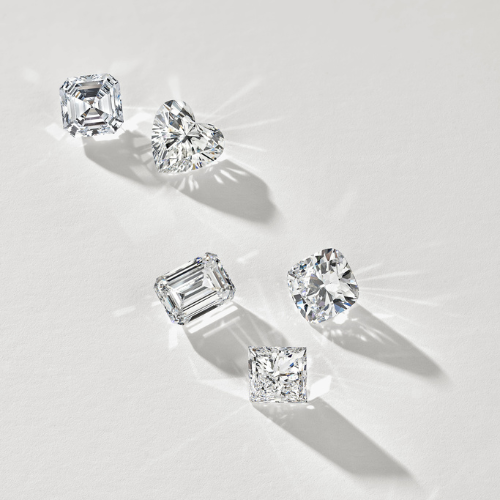Table of Contents
Introduction: What Is HPHT vs CVD in Diamond Production?
When it comes to creating lab-grown diamonds, two primary methods are widely used: HPHT (High Pressure High Temperature) and CVD (Chemical Vapor Deposition). Both methods are designed to replicate the natural conditions under which diamonds form, but they do so in different ways. HPHT vs CVD is a common comparison made by consumers and jewelers alike when discussing lab-grown diamonds. Each method has its unique processes, benefits, and challenges. Understanding the differences between HPHT vs CVD can help anyone interested in purchasing lab-grown diamonds make an informed decision based on their preferences and values.
The HPHT Process: How High Pressure High Temperature Creates Diamonds
The HPHT method was one of the first techniques used to create synthetic diamonds. It involves recreating the high pressure and high-temperature conditions found deep within the Earth. In this process, a small diamond seed is placed in a chamber, and carbon is subjected to extreme heat and pressure. Over time, the carbon bonds and crystallizes around the seed, forming a larger diamond. HPHT vs CVD in terms of the process reveals how HPHT is focused on mimicking the natural geological processes of diamond formation, using an environment similar to that found deep in the Earth. This method typically results in diamonds with a unique character, often with distinctive colorations that make them stand out in the market.
The CVD Process: Growing Diamonds with Chemical Vapor Deposition
CVD, on the other hand, is a newer method for creating lab-grown diamonds. The process begins with a small diamond seed placed in a vacuum chamber, where gases such as methane are introduced. These gases break down, and carbon atoms are deposited onto the seed, slowly growing into a diamond crystal. Compared to HPHT, the CVD process offers more control over the growth of the diamond. HPHT vs CVD in terms of their growth methods shows how CVD is often favored for producing diamonds that are more uniform in appearance and free of certain inclusions found in HPHT diamonds. CVD diamonds are known for their high-quality clarity and their ability to be grown in a wider range of shapes and sizes.
HPHT vs CVD: Which Method Is More Cost-Effective?
When comparing HPHT vs CVD in terms of cost, both methods have their advantages. HPHT diamonds are generally less expensive to produce than CVD diamonds because the process itself is simpler and more established. However, HPHT diamonds can sometimes have lower clarity, which may affect their overall value. On the other hand, CVD diamonds tend to be more expensive due to the complex technology required to grow them. However, CVD diamonds can achieve higher clarity and are often more consistent in quality. Understanding HPHT vs CVD from a financial perspective is essential for consumers looking to balance cost with quality when purchasing lab-grown diamonds.
Differences in Diamond Quality: HPHT vs CVD
The quality of a lab-grown diamond is a crucial consideration when choosing between HPHT vs CVD. While both methods produce diamonds that are virtually identical to natural diamonds, they can differ in terms of clarity, color, and inclusions. HPHT diamonds often have a more natural color range, with some stones exhibiting yellow or brown hues due to the process. In contrast, CVD diamonds tend to be clearer and can be grown in a wider variety of colors, such as colorless or near-colorless. The clarity of CVD diamonds is typically higher, with fewer inclusions compared to HPHT diamonds. When comparing HPHT vs CVD, it’s clear that the latter method allows for more precise control over the diamond’s final appearance, making it a popular choice for those seeking high-quality, clear diamonds.
Environmental Impact: HPHT vs CVD
Another important factor to consider when comparing HPHT vs CVD is the environmental impact of each method. HPHT diamonds require high energy consumption to achieve the extreme temperatures and pressures needed for diamond growth. While this process does produce diamonds that are environmentally more friendly than mined diamonds, the energy demands of HPHT can still have a significant carbon footprint. In contrast, CVD diamonds tend to have a lower environmental impact. The process can be powered by renewable energy sources, and the diamonds produced are often more energy-efficient. In the debate of HPHT vs CVD, those concerned with sustainability might prefer CVD diamonds, as the process offers a more environmentally conscious approach to diamond production.
Color Variations in HPHT vs CVD Diamonds
One of the main differences between HPHT vs CVD diamonds lies in their color. HPHT diamonds often have a more varied color range, with natural diamonds typically exhibiting hues such as yellow, brown, and even blue. This occurs due to the metal flux used during the HPHT process, which can introduce color impurities. On the other hand, CVD diamonds are usually colorless or near-colorless, thanks to the precise conditions in which they are grown. As a result, CVD diamonds are often sought after for their bright, clear appearance, especially by those who want a traditional diamond look. For buyers considering HPHT vs CVD for color, it’s essential to consider the type of color and clarity desired in the final product.
HPHT vs CVD: Impact on Diamond Size and Shape
When it comes to the size and shape of the final diamond, both HPHT vs CVD processes offer distinct advantages. HPHT diamonds are typically limited in size due to the high-pressure environment used to grow them, resulting in smaller diamonds. CVD diamonds, on the other hand, can be grown in a range of sizes and shapes, allowing for more customization and design options. CVD diamonds also tend to be more consistent in shape, with fewer irregularities or distortions in their structure. This makes CVD diamonds a popular choice for buyers looking for larger diamonds or those who want specific shapes, such as hearts, ovals, or cushions. In the debate of HPHT vs CVD for size and shape, CVD often offers more flexibility and options.
Longevity and Durability: HPHT vs CVD Diamonds
In terms of longevity and durability, both HPHT and CVD diamonds are incredibly strong and durable. Both methods create diamonds that are indistinguishable from natural diamonds in terms of hardness, scoring a 10 on the Mohs scale of hardness. This means that whether I choose an HPHT diamond or a CVD diamond, I can expect the same level of durability. However, HPHT diamonds may have slightly more imperfections or inclusions that could affect their structural integrity over time. On the other hand, CVD man made diamonds, being more carefully controlled during the growth process, tend to have fewer inclusions, potentially offering a slight advantage in terms of long-term durability. HPHT vs CVD in terms of durability shows that both types of diamonds are incredibly strong, but CVD diamonds may have a slight edge in consistency.
Final Thoughts: Choosing Between HPHT vs CVD
Choosing between HPHT vs CVD depends on several factors, including personal preferences, budget, and desired qualities in the diamond. HPHT diamonds are an excellent choice for those who are looking for a more affordable, natural-looking diamond with slight color variations. CVD diamonds, on the other hand, are perfect for those seeking high clarity, consistent color, and a broader range of customization options. Both HPHT and CVD diamonds offer environmentally friendly alternatives to mined diamonds, providing consumers with the opportunity to make a responsible purchase while still enjoying the beauty and brilliance of diamonds. Ultimately, the choice between HPHT vs CVD will come down to individual preferences and priorities when purchasing a lab-grown diamond.




